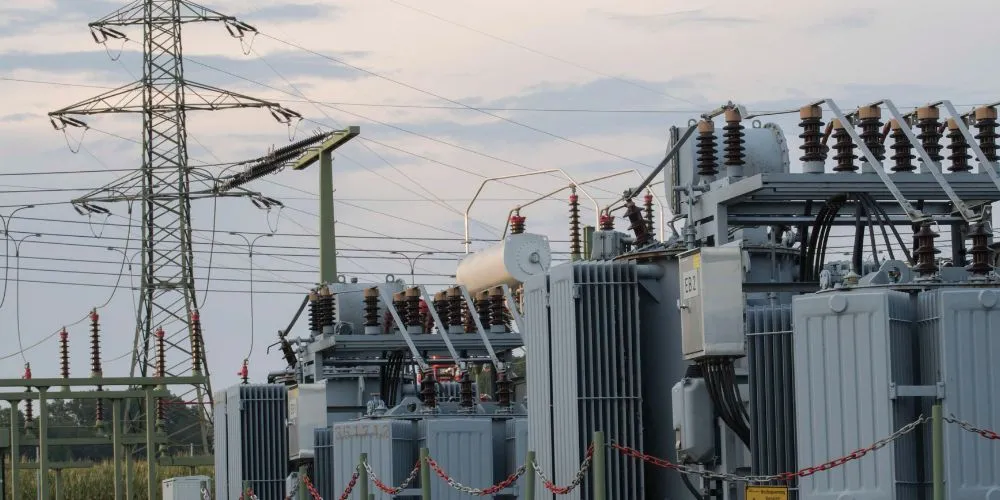Frequency regulation plays a pivotal role in maintaining the stability and reliability of modern energy grids. This comprehensive exploration delves into the significance of frequency regulation, its underlying mechanisms, diverse technologies, applications, and its transformative impact on ensuring a stable and balanced power supply. By understanding the critical role of frequency regulation, stakeholders in the energy sector can collaboratively work towards building a resilient and efficient energy infrastructure.
The Significance of Frequency Regulation
Frequency regulation is essential for balancing the instantaneous supply and demand of electricity on the grid. This process ensures that the grid operates within a narrow frequency range, typically 60 hertz in many regions, maintaining a stable and reliable power supply for consumers. Frequency regulation safeguards against fluctuations caused by sudden changes in demand or unexpected disruptions in the power system.
Frequency regulation involves continuously adjusting power output to match the varying demand for electricity. It is a dynamic process that relies on the instantaneous response of assets within the power system to counteract imbalances. By maintaining the grid’s frequency close to its nominal value, frequency regulation prevents deviations that could lead to instability and potential blackouts.
Key Mechanisms of Frequency Regulation
Frequency regulation employs two primary mechanisms: regulation up (increasing power output) and regulation down (reducing power output). Specialized assets, such as generators or energy storage systems, execute these mechanisms, which respond rapidly to grid frequency changes. The goal is to match generation with consumption and minimize deviations from the desired frequency.
Technologies Enabling Frequency Regulation
Various technologies contribute to effective frequency regulation, ensuring a rapid and precise response to fluctuations in power demand. Energy storage systems, including batteries and flywheels, play a crucial role in regulation because they can dispatch power almost instantaneously. Additionally, advanced control systems and grid-connected inverters enhance the accuracy and speed of frequency regulation processes.
Energy Storage Systems
Energy storage systems are instrumental in frequency regulation, providing rapid response times to grid frequency deviations. Batteries are particularly effective with their ability to charge and discharge quickly. These systems act as a stabilizing force on the grid, injecting or absorbing power as needed to maintain a consistent frequency.
Flywheel Systems
Flywheel systems store kinetic energy in a rotating mass and can release or absorb this energy to regulate frequency. With their rapid response times and ability to provide continuous power, flywheels complement other energy storage technologies, contributing to the grid’s stability.
Advanced Control Systems
Advanced control systems, including grid management software and predictive analytics, enhance the precision of frequency regulation. These systems use real-time data to anticipate changes in power demand and adjust generation accordingly, minimizing deviations from the desired frequency.
Grid-Connected Inverters
Grid-connected inverters, commonly used in renewable energy systems, play a vital role in frequency regulation. They enable renewable sources like solar and wind to participate in grid stabilization by adjusting their output in response to frequency changes, contributing to a more flexible and resilient power system.
Applications of Frequency Regulation
Frequency regulation finds diverse applications across the energy sector, contributing to grid stability, reliability, and the efficient integration of renewable energy sources.
Grid Stability and Reliability
One of the primary applications of frequency regulation is ensuring grid stability and reliability. Frequency regulation prevents deviations that could lead to voltage instability, equipment damage, and even widespread blackouts by continuously matching power generation with consumption.
Integration of Renewable Energy
Frequency regulation facilitates the integration of renewable energy sources, such as solar and wind, into the power grid. As these sources often exhibit variability, effective frequency regulation ensures a seamless transition by compensating for fluctuations in renewable energy generation.
Balancing Supply and Demand
Frequency regulation plays a crucial role in balancing the instantaneous supply and demand for electricity. As power demand fluctuates throughout the day, frequency regulation ensures that generation matches consumption, preventing imbalances that could compromise grid stability.
Enhancing Power Quality
Frequency regulation contributes to power quality by maintaining a stable grid frequency. Consistent frequency levels prevent issues like voltage sags and surges, ensuring a high-quality power supply for consumers and protecting sensitive equipment from potential damage.
Challenges in Frequency Regulation
Despite its numerous benefits, frequency regulation faces challenges that must be addressed for widespread adoption and optimal effectiveness.
Variability of Renewable Sources
The variability of renewable energy sources poses a challenge to frequency regulation. As solar and wind power generation can be intermittent, adjusting for fluctuations requires advanced forecasting and rapid-response mechanisms.
Aging Infrastructure
Aging infrastructure can limit the effectiveness of frequency regulation. Older power plants and equipment may lack the responsiveness needed for rapid adjustments, necessitating investments in modernization to enhance the grid’s ability to regulate frequency.
Market and Regulatory Barriers
Market and regulatory barriers can impede the efficient implementation of frequency regulation. Creating streamlined markets, transparent pricing mechanisms, and standardized regulations is essential to incentivize the participation of diverse technologies in frequency regulation.
Future Trends in Frequency Regulation
The future of frequency regulation holds exciting prospects with emerging trends that promise to address current challenges and further enhance its capabilities.
Machine Learning and Artificial Intelligence
Integrating machine learning and artificial intelligence (AI) into frequency regulation is a growing trend. These technologies can explore vast amounts of data to predict frequency changes, optimize responses, and enhance the overall efficiency of frequency regulation processes.
Decentralized Energy Storage Networks
The development of decentralized energy storage networks is on the rise. By distributing energy storage across various locations, these networks enhance the resilience and reliability of frequency regulation, particularly in scenarios where centralized storage may face challenges.
Electrification of Transportation
The electrification of transportation, especially the widespread adoption of electric vehicles (EVs), presents an opportunity for frequency regulation. EVs can serve as mobile energy storage units, providing grid support during peak demand.
International Collaboration
International collaboration is becoming increasingly important in optimizing frequency regulation. By sharing best practices, harmonizing standards, and fostering global cooperation, the energy sector can develop more effective and standardized approaches to frequency regulation.
Conclusion
Frequency regulation is a linchpin in ensuring the stability and reliability of modern energy grids. Its significance in balancing power supply and demand, integrating renewable energy sources, and enhancing overall grid resilience cannot be overstated. By embracing diverse technologies, overcoming challenges, and staying attuned to emerging trends, stakeholders in the energy sector can collectively contribute to a future where frequency regulation plays a central role in building sustainable, efficient, and resilient energy infrastructures. As advancements continue and collaboration strengthens, frequency regulation will remain a cornerstone toward a more reliable, sustainable, and responsive global energy grid.





